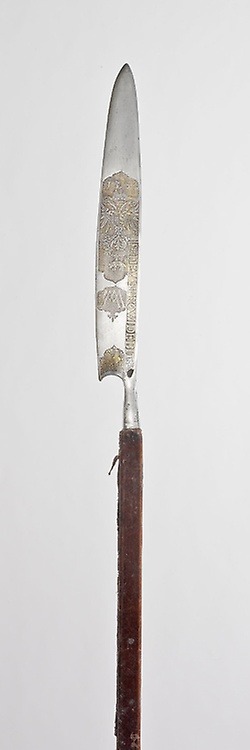Glaive for the Bodyguard of Emperor Maximilian II, Jörg Hopfer, 1564, Art Institute of Chicago:
Glaive for the Bodyguard of Emperor Maximilian II, Jörg Hopfer, 1564, Art Institute of Chicago: Arms, Armor, Medieval, and RenaissancePole arms (staff weapons) were used not only in warfare and hunting, but also in sporting combat and ceremonies. The term refers to a family of edged weapons attached to wooden staffs. With the exception of the lance, which remained the weapon of the mounted knight, all other staff weapons were wielded by men on foot by 1600. With the development of firearms and their introduction as infantry weapons, pole arms lost their importance on the field, and from the mid-16th century, they were reserved for use in sporting contests and by princely bodyguards for ceremony and parade. The blades lent themselves to embellishment—engraving, etching, or other forms of decoration—and provided a perfect surface for the coats of arms of noble or princely families. The ceremonial use of staff weapons continues to this day with the Swiss Guards at the Vatican and Britain’s Yeomen of the Royal Guard. George F. Harding CollectionSize: L. 215.9 cm (85 in.) Blade with socket L. 62.6 cm (24 5/8 in.) Wt. 5 lb. 4 oz.Medium: Steel, iron, gilding, oak, and silk textile (velvet)https://www.artic.edu/artworks/106511/ -- source link
Tumblr Blog : aic-armor.tumblr.com
#museumarchive#armsarmor#jörghopfer#artinstituteofchicago
